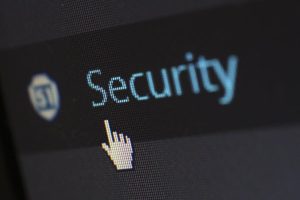Assessing and Strengthening Your Cybersecurity Posture in 2025: A Proactive Guide

As we navigate 2025, the cyber threat landscape is more dynamic and complex than ever. With AI-fueled phishing campaigns and ransomware groups operating like disciplined military units, organizations of all sizes must take a proactive stance toward protecting their digital environments.
This forward-looking guide outlines practical strategies, emerging technologies, and critical actions you can take to assess and enhance your cybersecurity posture for the evolving threat landscape.
Why Strengthening Your Cybersecurity Posture Matters in 2025
The acceleration of digital transformation driven by remote work, cloud adoption, and the proliferation of mobile and IoT devices has significantly expanded the cyber-attack surface. As technology evolves, so do the methods of cybercriminals, making it imperative for businesses to re-evaluate their security strategies.
In 2025 and beyond, expect attackers to weaponize AI, automate social engineering techniques, and exploit supply chains at scale. Proactively assessing your cybersecurity posture through regular risk evaluations can uncover vulnerabilities before they lead to breaches.
The Cyber Threat Landscape: What to Expect
Emerging Threats
Cybercriminals are becoming more sophisticated, using tools like Ransomware-as-a-Service (RaaS) and AI-driven malware to automate reconnaissance and attacks. Traditional defenses are no longer enough, modern threats require adaptive, intelligence-driven security.
Wider Attack Surfaces
Hybrid and remote work have dissolved traditional network perimeters. With employees connecting from multiple locations and devices, including BYOD and IoT, ensuring secure access and monitoring across cloud and on-prem environments has become increasingly challenging.
What the Data Says
Industry reports anticipate cybercrime costs reaching trillions globally by 2025. The frequency and severity of breaches are expected to rise, making proactive testing such as vulnerability assessments and penetration testing essential for reducing risk.
Core Components of a Modern Cybersecurity Framework
1. Risk Management
Start with identifying critical asset systems, data, and business processes and evaluating associated threats. Leverage frameworks like NIST, ISO 27001, or HITRUST to guide your risk management efforts and ensure a systematic approach.
2. Zero Trust Implementation
The Zero Trust model built on the principle “never trust, always verify” requires rigorous authentication and continuous validation of all access requests. Network segmentation and access controls help minimize potential damage from breaches.
3. Incident Response & Resilience Planning
An up-to-date incident response plan helps you respond quickly and effectively during a security event. Combine this with robust business continuity and disaster recovery planning to ensure operational resilience.
Embracing Advanced Technologies for Better Defense
AI & ML for Threat Detection
Artificial intelligence enables faster detection of anomalies and suspicious behaviors such as irregular login patterns or unusual data transfers before they escalate. These tools augment human analysts by identifying threats in real-time.
Cloud Security Fundamentals
Migrating to the cloud demands secure configurations. Implement encryption for data in transit and at rest, enforce MFA, and clarify your responsibilities versus your cloud providers under the shared responsibility model.
Endpoint Security Integration
Endpoints are prime targets. Leverage solutions like EDR and XDR for unified visibility, rapid response, and threat intelligence across all connected devices.
Creating a Security-First Culture
Employees with Awareness Training
Your workforce is your first line of defense. Conduct regular security awareness programs with practical examples to help employees recognize and respond to threats like phishing or suspicious links.
Establish Clear Policies
Define and enforce policies around access controls, password practices, mobile device usage, and incident reporting. These guidelines ensure employees understand their role in safeguarding sensitive information.
Secure Executive Commitment
Leadership buy-in is essential. Executive-level support reinforces the importance of cybersecurity, influences budget decisions, and fosters a company-wide culture of shared responsibility.
Staying Ahead of Regulatory Requirements
Evolving Compliance Landscape
Laws such as GDPR, CCPA, HIPAA, and PCI DSS continue to shape data protection requirements. New and updated regulations are expected as governments respond to the evolving tech landscape.
Tailored Compliance Approaches
Different industries face unique regulatory challenges financial services require audit trails, while healthcare focuses on patient data privacy. Customize your compliance programs accordingly.
Preparing for the Future
opt for adaptable frameworks that support compliance with emerging standards. Document your security measures thoroughly to streamline audits and adjust quickly to regulatory updates.
Practical Assessment Strategies
Penetration Testing and Red Teaming
Simulate real-world attacks to uncover vulnerabilities before threat actors do. Penetration tests, when combined with remediation plans, improve your organization’s cyber maturity over time.
Continuous Monitoring and Threat Detection
Deploy IDS, IPS, and active threat-hunting tools to detect anomalies in real time. A well-established monitoring strategy helps you respond promptly and limit damage.
Cyber Insurance Planning
Consider cyber insurance to offset financial losses. Understand coverage terms, exclusions, and eligibility requirements to ensure you’re adequately protected in the event of an incident.
Final Thoughts: Securing the Future Starts Now
In 2025, cybersecurity is no longer an option, it’s a necessity. The combination of AI-driven attacks, growing regulatory pressure, and advanced adversaries makes it essential to treat cybersecurity as a strategic business priority.
Start with a thorough assessment of your current security posture. Adopt Zero Trust principles, invest in next-gen technologies, and ensure compliance with global standards. Most importantly, cultivate a culture of cybersecurity at every level of your organization.
By taking a proactive and adaptive approach, you’ll not only reduce your risk exposure but also position your organization to thrive in a digital-first world.






